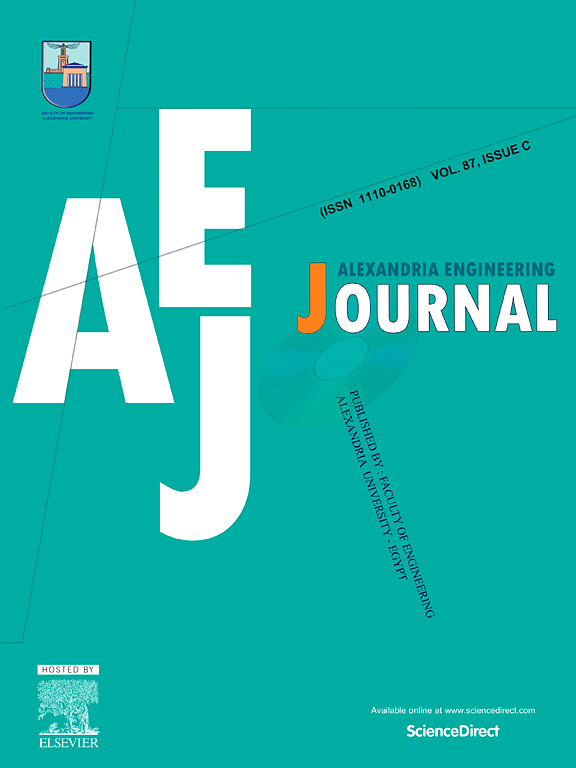慢性心脏病的识别和诊断:基于深度学习的混合方法
IF 6.2
2区 工程技术
Q1 ENGINEERING, MULTIDISCIPLINARY
引用次数: 0
摘要
慢性心脏病已成为医疗保健部门的一个具有挑战性的问题,需要认真对待,以挽救数百万心脏病患者的生命。在早期阶段对这种疾病的准确诊断可以减少它对人类生命的破坏性影响。为了解决这一问题,本研究提出了一种基于混合深度学习(DL)的方法,该方法结合了两种通用深度学习模型,即双向长短期记忆(BLSTM)和双向门控循环单元(BGRU),从而得到了一种高效的混合深度学习模型,名为BLSTM-BGRU。BLSTM部分捕获数据集属性之间的长期关系,保证患者历史数据的保存,这对于预测患者的健康状况至关重要。BGRU部分通过减少可训练参数的数量和减少梯度消失问题的影响,提高了模型的计算效率。BLSTM和BGRU的融合有助于模型学习心率、呼吸频率等心脏病属性的短期变化和长期依赖关系。该模型通过学习属性和复杂序列之间的远程关系,捕获了向前和向后方向的上下文依赖性,从而提高了心脏病诊断的准确性。为了确定BLSTM-BGRU模型的效率,使用了MIT-BIH数据集,该数据集由五种不同类型的心电信号组成。该数据集包含比其余四个类更多的正常类样本。因此,我们使用SMOTE数据集平衡技术来平衡数据集,从而避免了模型过拟合问题,提高了模型的效率。除了提出的模型,我们还研究了其他四种最通用的深度学习模型在不平衡和平衡数据集上的性能。该模型在非平衡数据集上的训练和测试准确率分别为99.90%和99.58%,在平衡数据集上的训练和测试准确率分别为99.95%和99.70%。结果强调了所提出的BLSTM-BGRU模型使用平衡和不平衡数据集的重要性,显示了其对心脏病识别的重要性和多功能性,从而增强了心脏病的预防和管理。本文章由计算机程序翻译,如有差异,请以英文原文为准。
Identification and diagnosis of chronic heart disease: A deep learning-based hybrid approach
Chronic heart disease has emerged as a challenging issue in the healthcare sector that needs serious attention to save the lives of millions of cardiac patients. The precise diagnosis of this disease in the early stages can reduce the devastating effect it has on human life. To address this issue, this study proposes a hybrid deep learning (DL)-based approach that combines two versatile DL models, namely, bidirectional long-short-term memory (BLSTM) and bidirectional gated recurrent unit (BGRU), resulting in an efficient hybrid DL model named BLSTM-BGRU. The BLSTM part captures long-term relationships between dataset attributes, guaranteeing the preservation of the patient’s historical data, which is essential for forecasting the patient’s health conditions. The BGRU part improves the computing efficiency of the model by lowering the number of trainable parameters and reducing the effect of vanishing gradient problems. The integration of BLSTM and BGRU helps the model to learn the short-term variations and long-range dependencies in heart disease attributes such as heart rate, respiratory rate, etc. The proposed model captures contextual dependency in forward and backward directions, resulting in improved heart disease diagnostic accuracy by learning long-range relationships between attributes and complex sequences. To determine the efficiency of the BLSTM-BGRU model, the MIT-BIH dataset, which consists of five different types of ECG signals, was used. The dataset consists of more normal class samples than the rest of the four classes. Therefore, we used the SMOTE dataset balancing technique to balance the dataset, thereby avoiding the model overfitting problem and improving its efficiency. Alongside the proposed model, we also investigated the performance of four other of the most versatile DL models on both unbalanced and balanced datasets. The proposed model achieved training and testing accuracy of 99.90% and 99.58% on an unbalanced dataset and 99.95% and 99.70%, respectively, on a balanced dataset. The results highlight the importance of the proposed BLSTM-BGRU model using both balanced and unbalanced datasets, showing its significance and versatility for the identification of heart disease, resulting in enhanced heart disease prevention and management.
求助全文
通过发布文献求助,成功后即可免费获取论文全文。
去求助
来源期刊

alexandria engineering journal
Engineering-General Engineering
CiteScore
11.20
自引率
4.40%
发文量
1015
审稿时长
43 days
期刊介绍:
Alexandria Engineering Journal is an international journal devoted to publishing high quality papers in the field of engineering and applied science. Alexandria Engineering Journal is cited in the Engineering Information Services (EIS) and the Chemical Abstracts (CA). The papers published in Alexandria Engineering Journal are grouped into five sections, according to the following classification:
• Mechanical, Production, Marine and Textile Engineering
• Electrical Engineering, Computer Science and Nuclear Engineering
• Civil and Architecture Engineering
• Chemical Engineering and Applied Sciences
• Environmental Engineering
 求助内容:
求助内容: 应助结果提醒方式:
应助结果提醒方式:


